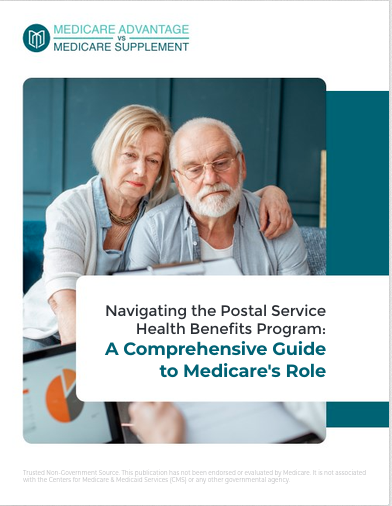Key Takeaways
-
Medicare Advantage plans come with both benefits and trade-offs, so it’s important to weigh your healthcare needs before switching.
-
Costs, provider networks, and plan flexibility should be carefully considered to avoid future surprises.
Are You Really Getting the Coverage You Need?
Switching to a Medicare Advantage plan might seem like a great move, but before you take the leap, you need to assess whether the coverage actually fits your needs. Medicare Advantage plans operate differently from Original Medicare, often bundling additional benefits while imposing network restrictions and cost-sharing structures that may or may not work for you.
Limited Provider Networks Can Affect Your Access to Care
One of the biggest changes when moving to a Medicare Advantage plan is the shift to a managed care network. Most Medicare Advantage plans use either Health Maintenance Organization (HMO) or Preferred Provider Organization (PPO) models, which require enrollees to use a specified network of doctors, hospitals, and specialists.
-
HMO Plans: Require you to choose a primary care physician (PCP) and get referrals for specialist visits. Out-of-network care is usually not covered except for emergencies.
-
PPO Plans: Offer more flexibility, allowing you to see specialists without referrals and use out-of-network providers at a higher cost.
If your current doctors aren’t in a Medicare Advantage plan’s network, you may need to switch providers or pay significantly more for care. Check whether your preferred healthcare providers accept the plan before making the switch.
Additional Benefits Aren’t Always as Valuable as They Seem
Medicare Advantage plans often advertise extra benefits like dental, vision, hearing, and wellness perks. While these can be useful, they are often limited in scope. Dental benefits, for example, might only cover cleanings and exams but exclude more extensive procedures like crowns or dentures. Vision benefits may only cover prescription glasses but not advanced treatments.
Be sure to read the plan details carefully to understand exactly what’s included and whether these benefits are worth any trade-offs in provider access or out-of-pocket costs.
Will This Plan Save You Money in the Long Run?
Medicare Advantage plans structure their costs differently from Original Medicare, which means your total expenses could look very different depending on the plan you choose.
Understand the Cost Breakdown
Unlike Original Medicare, where you generally pay 20% of covered services after meeting the Part B deductible, Medicare Advantage plans have a different cost-sharing structure:
-
Monthly Premiums: Many plans have premiums in addition to the standard Medicare Part B premium. Always check if the total premium cost fits within your budget.
-
Deductibles: Some plans have annual deductibles, meaning you must pay a set amount before coverage kicks in.
-
Copayments and Coinsurance: Medicare Advantage plans often require copays for doctor visits, hospital stays, and prescriptions. These costs can add up quickly.
-
Out-of-Pocket Maximums: One benefit of Medicare Advantage plans is that they cap annual out-of-pocket costs. This can provide financial protection in case of major medical expenses.
Even if a plan looks more affordable on the surface, the long-term costs could be higher if you require frequent care, specialist visits, or expensive medications. Always compare estimated costs under both Medicare Advantage and Original Medicare before making a decision.
Prescription Drug Coverage Varies Widely
If you rely on prescription medications, be sure to compare Medicare Advantage plans’ drug formularies to ensure your medications are covered. Each plan has a unique formulary that categorizes drugs into different pricing tiers. Some plans may require prior authorization for certain medications or have restrictions like step therapy, which mandates trying a lower-cost drug before approving a more expensive one.
Additionally, the Medicare Part D out-of-pocket cap is now $2,000 per year in 2025, which can significantly lower drug costs. However, not all Medicare Advantage plans integrate their drug coverage in the same way, so make sure your prescriptions fit within the plan’s formulary and cost structure.
Are You Prepared for Plan Limitations and Restrictions?
Medicare Advantage plans come with different rules compared to Original Medicare, and switching back isn’t always simple.
Changing Plans Isn’t Always Easy
Medicare Advantage enrollees can typically make changes only during certain enrollment periods:
-
Medicare Open Enrollment (October 15 – December 7): You can switch Medicare Advantage plans or return to Original Medicare.
-
Medicare Advantage Open Enrollment (January 1 – March 31): You can switch to another Medicare Advantage plan or return to Original Medicare, but you can only make one change.
-
Special Enrollment Periods (SEPs): You may qualify for a SEP due to life events like moving out of your plan’s service area or losing employer coverage.
If you switch to a Medicare Advantage plan and later decide it’s not the right fit, you may face limitations when returning to Original Medicare. Specifically, if you had a Medicare Supplement (Medigap) policy before switching, you may not be guaranteed the ability to buy one again without medical underwriting.
Prior Authorizations and Referral Requirements
Unlike Original Medicare, which allows you to see any provider who accepts Medicare, many Medicare Advantage plans require prior authorization for certain procedures, tests, and specialist visits. This means you must get approval from the plan before receiving certain types of care, which can cause delays or denials if your request doesn’t meet the insurer’s criteria.
-
Common services requiring prior authorization include:
-
Advanced imaging (MRIs, CT scans)
-
Some prescription medications
-
Hospital admissions
-
Durable medical equipment (DME)
-
This added layer of approval can be frustrating, especially if you have ongoing health conditions that require frequent treatment.
Regional Availability and Plan Changes
Medicare Advantage plans are region-based, meaning availability and benefits vary depending on where you live. If you move out of your plan’s service area, you will have to enroll in a new plan, which may not offer the same benefits or provider access.
Additionally, plans change every year, which means benefits, provider networks, and costs can shift. Always review your plan’s Annual Notice of Change (ANOC), which is sent out before Open Enrollment, to ensure your plan still meets your needs.
Make an Informed Decision Before Switching
Choosing a Medicare Advantage plan is a big decision that can impact your healthcare costs, provider access, and overall experience with Medicare. While these plans can offer valuable benefits, they also come with potential drawbacks that might not be immediately obvious.
Before making the switch, take the time to:
-
Review provider networks to ensure your doctors and hospitals are covered.
-
Compare costs, including premiums, deductibles, copays, and out-of-pocket maximums.
-
Understand plan rules, including prior authorization requirements and limitations on switching back to Original Medicare.
If you have any doubts or need assistance, consult with a professional listed on this website who can provide guidance based on your specific healthcare needs and financial situation.










